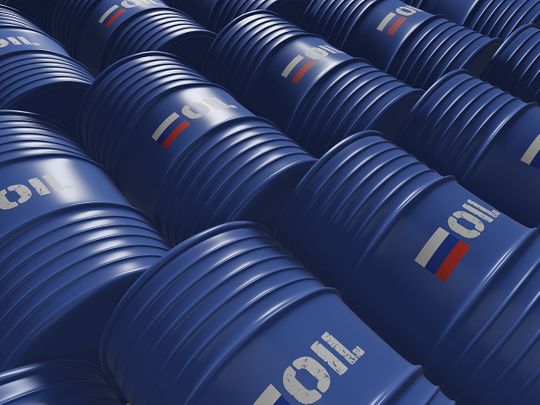
Oil officials from the member states of the Organisation of the Petroleum of Exporting Countries (OPEC+) will meet on Sunday, December 3, to decide the next phase of production policy. Global crude prices were subdued on Friday as the proposed price cap on Russian crude kicks in on Monday. Brent, the benchmark for two-thirds of the world’s oil, was trading marginally lower at $85.57 a barrel at 8.08 pm UAE time. West Texas Intermediate, the gauge that tracks US crude, was down 1.53 per cent at $79.98 a barrel.
The EU agreed to put a price cap on Russian oil at $60 a barrel, paving the way for a broader Group of Seven deal.The price is higher than where Russia already sells most of its crude. That’s because one of the main aims of the measure is to try to keep Russian oil flowing to global markets. But it’s less generous than an earlier proposal after pressure from Poland and the Baltic countries.
After lengthy negotiations, those countries secured additional conditions, including a mechanism that would allow for revisions of the price every two months; there’s also a provision to make sure any resetting of the cap should leave it at least 5 per cent below average market rates. Andrzej Sados, Poland’s ambassador to the EU, told Bloomberg News, “This is a good solution for Ukraine and Europe.”
On the other hand, Russia said it would not accept the $60 per barrel price cap for its crude oil agreed upon by the European Union, state news agency Tass reported, citing Kremlin spokesman Dmitry Peskov. It was the Kremlin’s first reaction after European diplomats decided on the threshold on Russian oil Friday evening following lengthy negotiations. The cap will ban companies from providing services, including shipping and insurance, to Russian oil shipments anywhere in the world unless it’s sold below the agreed level. “We’re analysing it now,” Peskov said on Saturday. “Some preparation has been made for such a cap. We will not accept this cap.” Moscow will announce how the work will be organised after the analysis, Peskov said, adding that it will be conducted quickly.
The US first proposed the cap as there were concerns in Washington that impending EU sanctions were so strict they would cut off Russian supply and cause a massive spike in global oil prices. The cap provides an off-ramp, allowing buyers adhering to it to access the insurance and shipping services that EU sanctions would otherwise prohibit. The US plan was then adopted in principle by the G-7 - with the details still to be hashed out.
As Russia is already selling its crude at a discount, the cap is higher than the price of the country’s flagship grade - known as Urals - which fell as low as $45.31 a barrel this week at the Baltic Sea port of Primorsk, according to Argus Media, one of the market’s two preeminent pricing companies. It rose to $48.04 on Wednesday.
Following Sunday’s meeting, it is widely expected that Opec+ will stick to its latest target of reducing oil production by 2 million barrels per day (bpd) when it meets. Still, some analysts believe that crude prices could fall if the group does not make further cuts, according to news reports. Meanwhile, Iraqi oil minister Hayan Abdel-Ghani affirmed on Saturday that OPEC members are committed to the agreed production rates till the end of 2023. Abdel-Ghani made these remarks during a ministerial meeting of the member states of the OPEC via video conferenc












